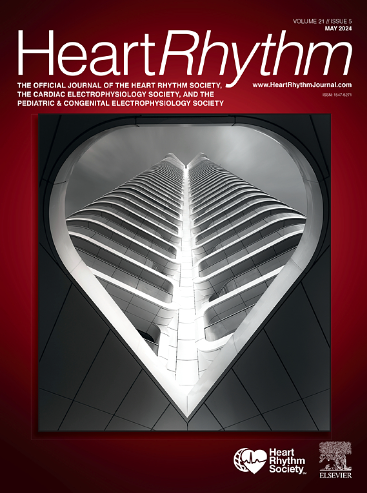Managing drug–drug interactions with mavacamten: A focus on combined use of antiarrhythmic drugs and anticoagulants
IF 5.7
2区 医学
Q1 CARDIAC & CARDIOVASCULAR SYSTEMS
引用次数: 0
Abstract
Mavacamten is a selective, allosteric, and reversible cardiac myosin inhibitor, representing the first disease-specific treatment for obstructive hypertrophic cardiomyopathy (HCM) that targets the core pathophysiological mechanism of this condition. Clinical evidence supports its efficacy in improving symptoms, cardiac function, and remodeling, thereby supplementing established treatment regimens. However, mavacamten is extensively metabolized by hepatic cytochromes, and its half-life is contingent upon CYP2C19 phenotype. Consequently, coadministered medications that inhibit or induce these enzymes may significantly alter mavacamten pharmacokinetics, potentially leading to reversible systolic dysfunction or diminished therapeutic efficacy. This paper provides a comprehensive analysis of mavacamten pharmacokinetics and its potential interactions with antithrombotic and antiarrhythmic agents, which are the cornerstones of atrial fibrillation management in HCM population. Our aim is to offer clinicians practical guidance on safely administering mavacamten in conjunction with these medications, discuss the role of pharmacogenomics, and outline rigorous patient safety monitoring strategies to ensure effective and individualized treatment.

处理与马伐卡坦的药物-药物相互作用:抗心律失常药物和抗凝血剂联合使用的重点。
Mavacamten是一种选择性、变抗性和可逆性心肌蛋白抑制剂,是首个针对梗阻性肥厚性心肌病(HCM)核心病理生理机制的疾病特异性治疗药物。临床证据支持其在改善症状、心脏功能和重塑方面的功效,从而补充了既定的治疗方案。然而,马伐卡坦被肝细胞色素广泛代谢,其半衰期取决于CYP2C19表型。因此,抑制或诱导这些酶的联合用药可能显著改变马伐卡坦的药代动力学,可能导致可逆性收缩功能障碍或治疗效果降低。本文全面分析了马伐卡坦的药代动力学及其与抗血栓和抗心律失常药物的潜在相互作用,这些药物是HCM人群房颤治疗的基础。我们的目标是为临床医生提供安全使用马伐卡坦与这些药物的实用指导,讨论药物基因组学的作用,并概述严格的患者安全监测策略,以确保有效和个性化的治疗。
本文章由计算机程序翻译,如有差异,请以英文原文为准。
求助全文
约1分钟内获得全文
求助全文
来源期刊

Heart rhythm
医学-心血管系统
CiteScore
10.50
自引率
5.50%
发文量
1465
审稿时长
24 days
期刊介绍:
HeartRhythm, the official Journal of the Heart Rhythm Society and the Cardiac Electrophysiology Society, is a unique journal for fundamental discovery and clinical applicability.
HeartRhythm integrates the entire cardiac electrophysiology (EP) community from basic and clinical academic researchers, private practitioners, engineers, allied professionals, industry, and trainees, all of whom are vital and interdependent members of our EP community.
The Heart Rhythm Society is the international leader in science, education, and advocacy for cardiac arrhythmia professionals and patients, and the primary information resource on heart rhythm disorders. Its mission is to improve the care of patients by promoting research, education, and optimal health care policies and standards.
 求助内容:
求助内容: 应助结果提醒方式:
应助结果提醒方式:


